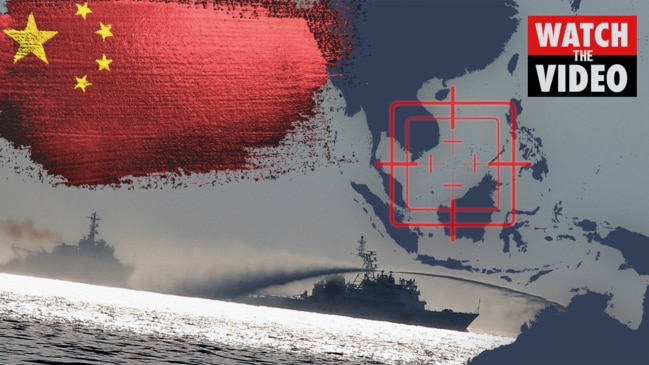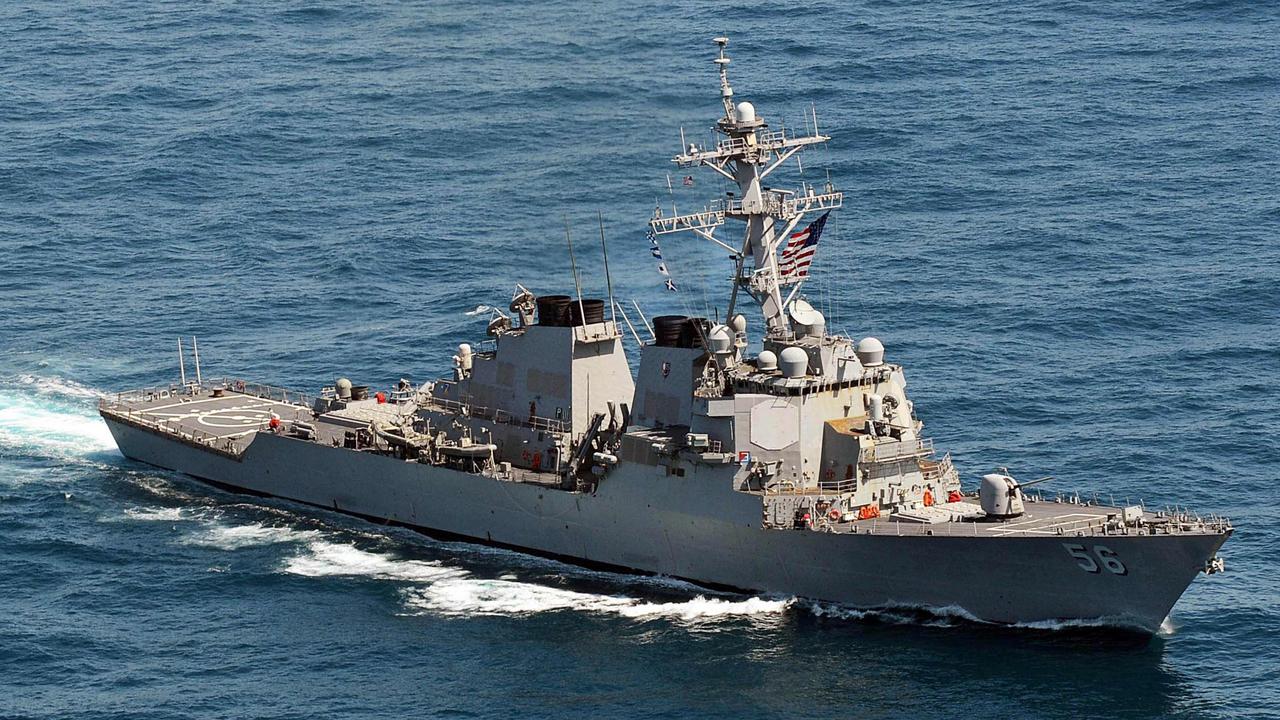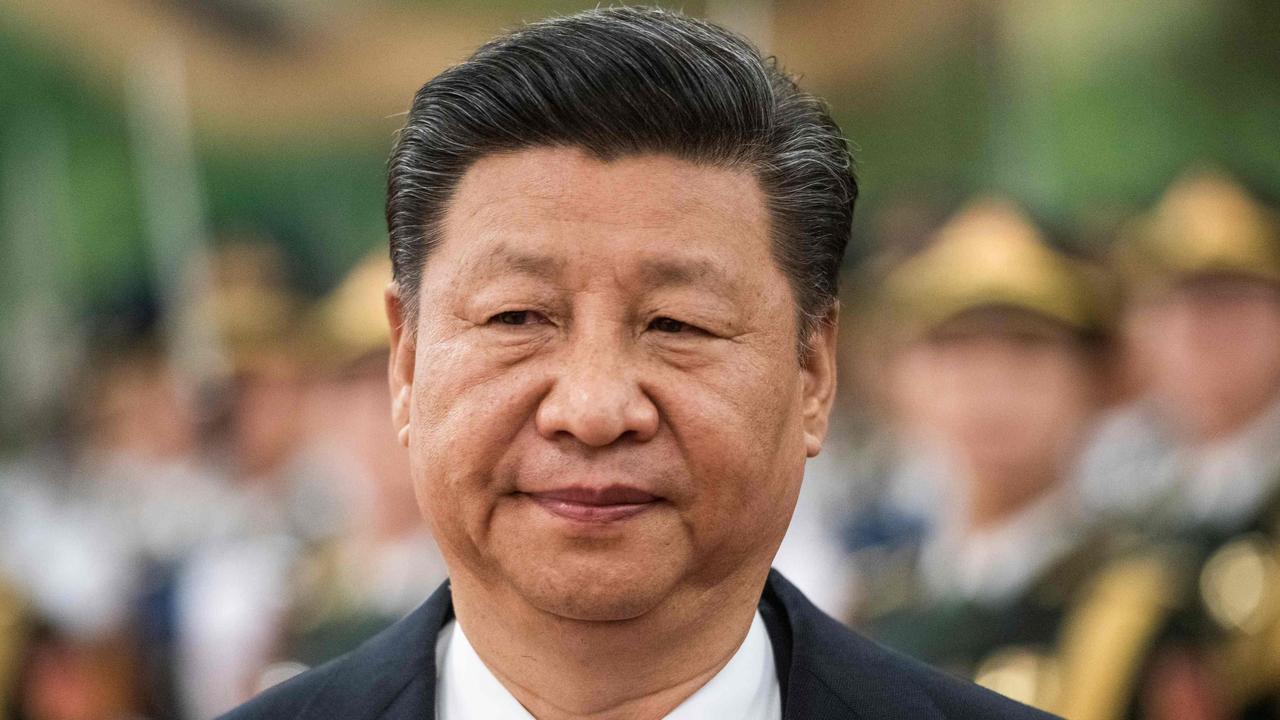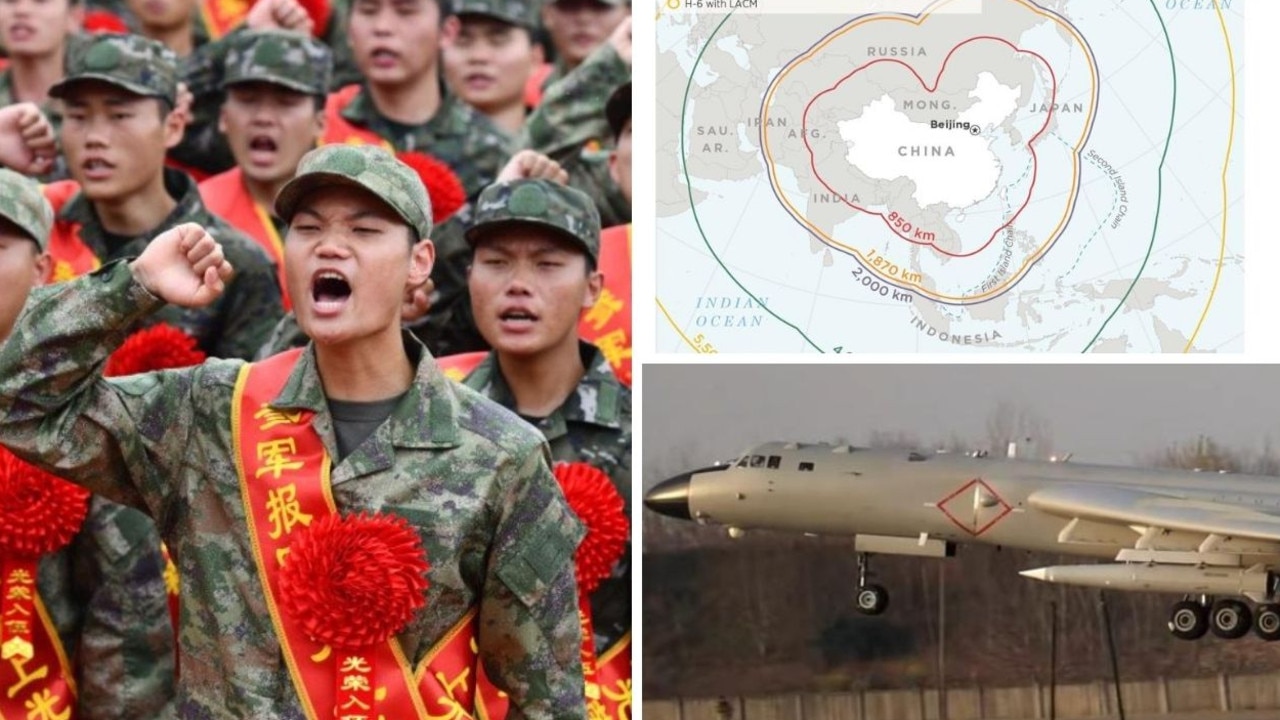South China Sea: Beijing doubles down after US sails through waters
Trouble is reaching fever pitch in the South China Sea as Beijing doubles down on what they’ve called “provocative actions” by the US.

Beijing is doubling-down on its assertion of total control over the South China Sea, swarming warships and aircraft around a US destroyer as it sailed through international waters at the weekend.
“We urge the US side to immediately stop such kind of provocative actions, strictly manage and control its maritime and air military operations so as not to cause any eventuality,” warns a Chinese military spokesman.
The guided-missile destroyer John S. McCain crossed through the South China Sea, passing near the disputed Paracel Islands on Friday. It’s the third such mission since June.
The warship’s presence is part of Washington’s ongoing “Freedom of Navigation” campaign to assert what it calls common practice. The post-World War II Law of the Sea determines the South China Sea and Taiwan Strait to be international waters. This permits the unrestricted movements of any commercial, private or national vessels.
Beijing, despite being a signatory to the International Law of the Sea (UNCLOS), is ignoring this.
RELATED: Chinese war that never ended

RELATED: ‘War will come’: China’s shick new threat
Chinese People’s Liberation Army (PLA) Colonel Zhang Nandong told the Communist Party controlled Xinhua News Agency that Beijing demanded the US end such “blatant navigation hegemony and military provocation” that “seriously violated China’s sovereignty and security interests, and gravely jeopardised peace and stability in the South China Sea”.
In July, Beijing accused the US of “sailing through the world like a bully” after the aircraft carriers USS Nimitz and USS Ronald Reagan exercised in the region.
Now Zhang has accused Washington of sending its warships to “show off its force and severely infringe upon China’s sovereignty and security interests”.
He warned of tougher measures to come, stating Beijing would take “all necessary” measures to safeguard its national security.
MIGHT MAKES RIGHT?
Since taking control of the Chinese Communist Party (CCP) in 2012, Chairman Xi Jinping has doubled-down on expansionist territorial claims ranging from the Himalayas in the east to the South and East China Seas in the west.
With the international diplomatic and economic crisis surrounding the COVID-19 pandemic, those disputes have further escalated this year.
China has dramatically expanded its military – particularly the navy – in recent years. It’s now reached a strength where it can conceivably confront the dominance of the United States.
And Mr Xi may be angling to do exactly that, earlier this year ordering his fleet to “resolutely safeguard national sovereignty, security and development interests”.
Washington, for its part, has also stepped up the pressure. For the first time, it has formally declared China’s territorial claims to be illegal.
RELATED: China’s aggressive move in South China Sea

Beijing’s growing belligerence has also upset its relations with neighbouring countries, not least of which includes Australia.
“This is the time for China to give up the nine-dash line. It doesn’t work in its interest,” East Asian Institute (EAI) military analyst Dr Li told a recent international affairs conference.
But, he said, Mr Xi’s nationalistic rhetoric may have painted China into a corner.
“What really drives Chinese foreign policy is not so much public opinion as it is institution dynamics,” he added. “If China really decides to modify the nine-dash line … I don’t think the PLA will like that.”
PARACEL BATTLEFIELD
Beijing claims sovereignty over the entire South China Sea. But closer nations, such as Taiwan, the Philippines, Brunei, Malaysia and Vietnam, also claim ownership.
The Paracel Islands, so far, are the only islands to have been the subject of Chinese military invasion.
These islands, between Vietnam and the Chinese province of Hainan, were the scene of an intense clash in 1974. The status-quo had been that the eastern Paracels were controlled by Beijing, and the west by Hanoi.
Then Vietnam’s navy discovered that Chinese People’s Liberation Army (PLA) troops had established a beachhead in the western portion of the island chain, prompting an armed intervention. Beijing dramatically escalated the clash, overwhelming Vietnamese forces with a combined-arms amphibious assault.

The waters around the islands have continued to be the scene of stand-offs between fishing and coast guard fleets, with several Vietnamese fishing boats rammed and boarded in recent months.
In July, Hanoi accused Beijing of violating its sovereign waters during the conducting of immense naval exercises in the region, further escalating tensions.
HIGH-SEAS HELL RAISING
“The Xisha (Paracel) and Nansha (Spratly) Islands are Chinese territory. Vietnam’s claim violates international law, including the UN Charter and the United Nations Convention on the Law of the Sea, and is illegal and invalid,” Spokesperson Zhao Lijian told a press briefing in April, following a formal protest by Vietnam to the United Nations.
But, in 2016, a United Nations international court of arbitration found that China’s claims were baseless and without historical justification.
Beijing has ignored this ruling.
Ruling aside, China insists its alleged sovereignty makes it illegal for foreign militaries to send vessels and aircraft through these waters without permission.
This has prompted Washington to adopt a much harder line: “Beijing’s claims to offshore resources across most of the South China Sea are completely unlawful, as is its campaign of bullying to control them,” Secretary of State Mike Pompeo said in July.
The US, and many other nations are defiantly adhering to the Law of the Sea ruling, continuing the free and open access to the South China Sea that has been enjoyed since the end of World War II.
Washington is asserting these rights through its Freedom of Navigation operations (FONOPS), such as that conducted by the USS McCain at the weekend.
Beijing is attempting to assert control over the region through building artificial island fortresses in the Paracel and Spratly Islands, and using its Coast Guard to escort fishing fleets into the economic zones of nearby nations.
Jamie Seidel is a freelance writer | @JamieSeidel




